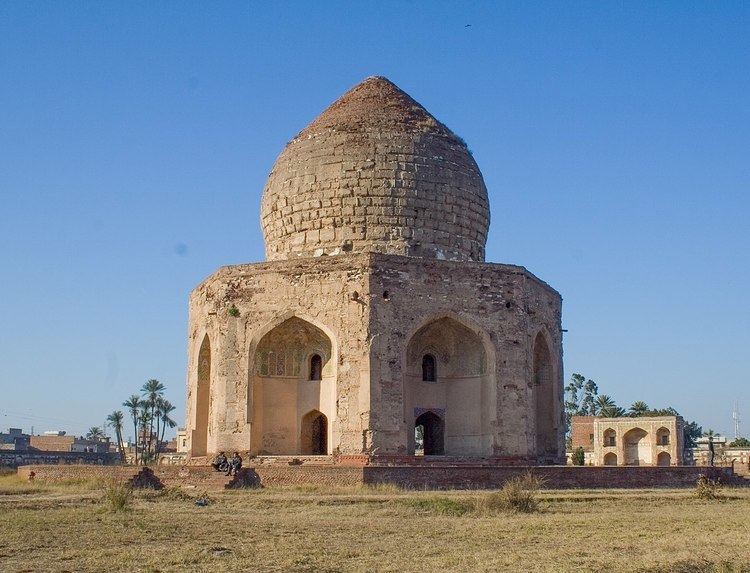Phone +92 300 0520751 | ||
 | ||
Address Shahdra Town Road، Shahdara, Pakistan Hours Closed now Sunday5AM–4PMMonday5AM–4PMTuesday5AM–4PMWednesday5AM–4PMThursday5AM–4PMFriday5AM–4PMSaturday5AM–4PMSuggest an edit Similar | ||
Tomb of asif khan lahore
The Tomb of Asif Khan is a mausoleum located in Shahdara Bagh in Lahore, Punjab. It was constructed for the Mughal statesman Abul-Hasan ibn Mirza Ghiyas Beg, who was titled Asif Khan. Asif Khan was brother of Nur Jahan, and brother-in-law to the Mughal Emperor Jahangir. Asif Khan's tomb is located adjacent to the Tomb of Jahangir.
Contents
Background
Asif Khan was the brother of Empress Nur Jahan, and father of Arjumand Bano Begum, who became the consort of Shah Jahan under the name Mumtaz Mahal. In 1636, he was elevated as Khan-e-Khana and commander-in-chief and a year later became the governor of Lahore. Asif Khan died on 12 June 1641 in a battle against the forces of rebel Raja Jagat Singh. His tomb was commissioned to be built in the Shahdara tomb complex in Lahore by Shah Jahan. It was built to the west of the tomb of Jahangir, facing it. It took four years and was completed in 1645 at a cost of 0.3 million rupees.
History
During rule of the Sikh Empire, the tomb was plundered by the Sikhs for its marble and sandstone, which were to be used in other building projects.
Today the tomb and the walls as well as the main gate are dilapidated. The tomb, along with the adjacent Akbari Sarai and the Tomb of Jahangir, is on the tentative list as a UNESCO World Heritage Site.
Architecture
The tomb is built entirely of brick. The main chamber is of octagonal plan, with a large central double-layered bulbous dome. It stands in the centre of a large Mughal garden, which is divided into four squares. Octagonal tombs were never used for emperors but they were commonly employed for burial of high-ranking noblemen such as Asaf Khan. The bulbous dome that crowns the tomb is an innovation of Shah Jahan's era that was used to great effect at other sites such as the Taj Mahal. It once had a water reservoir, which fed into fountains and pathways. The floor of the platform on which the tomb stands was created in Sang-e Abri, while the outer walls were covered with red sandstone.
Each side has a deeply recessed iwan, or alcove, with a door and arched window looking into the tomb. The exterior originally was adorned with marble stone inlay work and veneered with stucco tracery, and blue kashi tiles typical of Lahore. The floors were decorated with marble, inlaid with precious stones.
The interior was renowned for its lavish use of white marble and precious stone inlay, which has since disappeared. The inner dome ceiling is decorated in a high plaster relief of interlacing patterns, but much of it has fallen off. The tomb contains the marble cenotaph, carved with inscriptions from the Qur'an, similar to that in Emperor Jahangir's adjacent tomb.
Historian Harold Hargreaves says about the tomb, "Despite its simplicity, there is a sense of restful quietude at this site (Asif Khan's Tomb) which renders it one of the most fascinating monuments in the neighborhood of Lahore."
